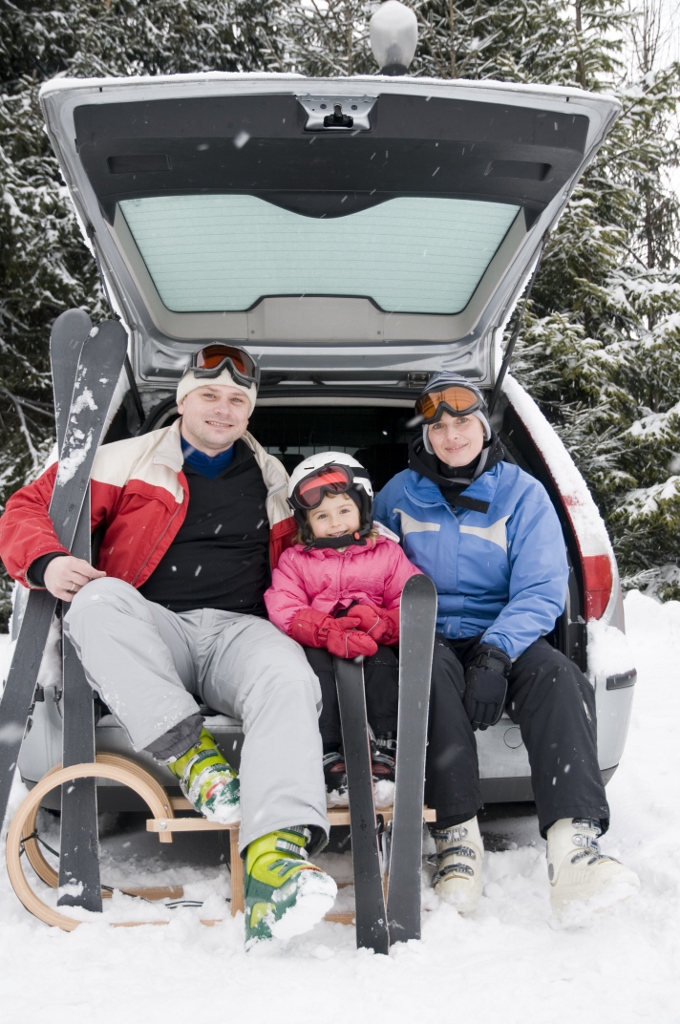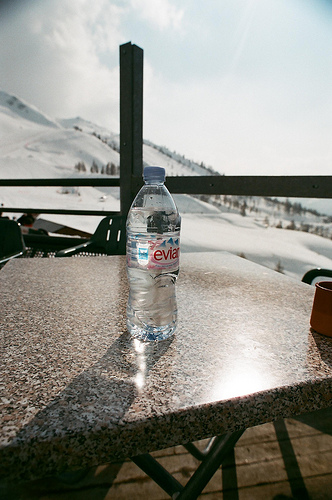Taking a trip to a winter wonderland? While traveling to a chilly destination can be just as fun and enjoyable as a warm weather trip, the truth is, it requires a little extra preparation (and a little extra patience for bad weather snafus!). Whether you’re planning a ski adventure in Colorado, a business trip in Beijing, or studying abroad in Paris, check out these practical tips for staying safe and healthy in cold weather this winter:
Bundle up.
 You’ve heard it a million times before and it’s true: When it’s cold, you need to dress in layers. Dressing in layers helps regulate your body temperature and gives you the flexibility to remove clothing as needed. Many winter activities can make you warm, but once you stop moving, you’ll want those heavier layers back. Wool socks, boots, thermal underwear and a warm jacket are essential; as are gloves and a hat since the fingers and ears are especially prone to frostbite.
You’ve heard it a million times before and it’s true: When it’s cold, you need to dress in layers. Dressing in layers helps regulate your body temperature and gives you the flexibility to remove clothing as needed. Many winter activities can make you warm, but once you stop moving, you’ll want those heavier layers back. Wool socks, boots, thermal underwear and a warm jacket are essential; as are gloves and a hat since the fingers and ears are especially prone to frostbite.
Also, make sure to pay attention to your destination’s climate – down garments are great in dry climates, but not so much in wetter climates as they lose their insulating properties when wet and are slow to dry. On the other hand, something with synthetic insulation (such as Thinsulate™) dries quickly and provides insulation when wet. For more layering advice, check out our “morning routine” approach to layering here.
Avoid overexertion.
Cold weather puts an extra strain on your heart, so consult with your doctor about your activity level in the cold – especially if you have heart disease or high blood pressure. Even if you’re just taking a stroll, the combination of colder temperatures and physical activity increases the workload on the heart, thus increasing the risk of heart attack. Remember, your body is already working overtime just to stay warm, so don’t overdo it.
Understand wind chill.
Being prepared for winter weather goes beyond checking the temperatures for the day. Temperatures below freezing (32°F) and slightly higher temperatures accompanied by wind chill effects are risk factors for hypothermia and frostbite. The Wind Chill Index, which is the temperature your body feels when the air temperature is combined with the wind speed, is not something that should be taken lightly.
As the wind speed increases, it can carry heat away from your body much more quickly, thus making you more susceptible to weather-related health problems. Check out the Weather Channel’s wind chill chart which shows the difference between actual air temperature, perceived temperature and the amount of time it takes until frostbite occurs (according to the National Safety Council, frostbite is the most common injury caused by exposure to extreme cold).
Practice slope safety.
Flying effortlessly down a snow-covered slope, soaking up the beautiful mountain scenery, all while  getting a great workout …there’s certainly a lot to love about skiing. However, it’s a sport that also presents some very real dangers, making general safety awareness, even for the most advanced skiers, a top priority.
getting a great workout …there’s certainly a lot to love about skiing. However, it’s a sport that also presents some very real dangers, making general safety awareness, even for the most advanced skiers, a top priority.
First things first: if you’re planning on hitting the slopes, turn to a credible source to brush up on general ski safety practices – things like having the right gear, wearing proper clothing, sticking to trails that match your ability level and following the National Ski Patrol’s Skier Responsibility Code can go a long way in preventing injuries. Also, if you’re not used to high altitudes, you may start to feel sick because of the sudden change in oxygen. To avoid altitude sickness, take your trip slowly – just because you live in Boston and could be skiing in Colorado by the afternoon, it doesn’t mean you should.
Stay hydrated.
 Since the main function of water in the body is to regulate temperature, it’s no surprise that dehydration can contribute to hypothermia. When you get extremely dehydrated, your body becomes imbalanced and has a difficult time maintaining a regular temperature of 98 degrees. To avoid this, drink plenty of water and lay off alcoholic and caffeinated beverages. Fruits are also an excellent source for water – watermelon is comprised of 90% water, and oranges, grapefruit, and melons (like cantaloupe and honeydew) are also strong contenders. Juices and sports drinks are also good hydrators, but can be high in sugar – if these are your beverages of choice, consider diluting them with water first.
Since the main function of water in the body is to regulate temperature, it’s no surprise that dehydration can contribute to hypothermia. When you get extremely dehydrated, your body becomes imbalanced and has a difficult time maintaining a regular temperature of 98 degrees. To avoid this, drink plenty of water and lay off alcoholic and caffeinated beverages. Fruits are also an excellent source for water – watermelon is comprised of 90% water, and oranges, grapefruit, and melons (like cantaloupe and honeydew) are also strong contenders. Juices and sports drinks are also good hydrators, but can be high in sugar – if these are your beverages of choice, consider diluting them with water first.
Say yes to eye and skin protection.
When it comes to UV rays, the winter season is more dangerous than you may think. UV radiation is not only emitted from the sky, but is also reflected from light surfaces on the ground, such as snow. In fact, according to the Skin Cancer Foundation, snow reflects up to 80 percent of the UV light from the sun, meaning that you are often hit by the same rays twice. The same rules apply for cold weather and warm weather eye and skin protection: choose waterproof sunscreens SPF 30 or higher (with broad-spectrum or multi-spectrum protection for both UVB and UVA rays) and wear sunglasses (or goggles) that offer 99 percent or greater UV protection.
Hope for the best, plan for the worst.
Before you leave, make sure you have a plan in place for anything that could go awry. For example, notify close friends and family of your itinerary, keep phone numbers of emergency contacts with you, pack a travel first aid kit, and know who you can call in the event of an emergency.
What are your favorite chilly winter destinations? Let us know in the comments below!




